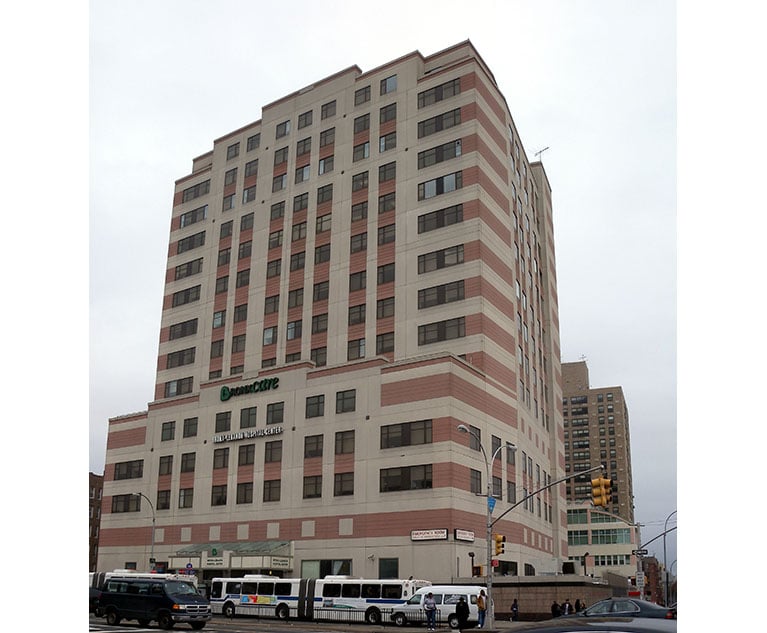Non-U.S. organizations vaulted up a premium ranking of writersof excess and surplus lines insurance in the United States in 2009,although industrywide U.S. E&S premiums shrank for the thirdstraight year.
|Bermuda-based Ironshore Group was the biggest sprinter–climbing35 spots to 20th place on a ranking of groups based on their directU.S. E&S premium writings in 2009, with its $312 million totalpushing the group up from the 55th spot it occupied in 2008.
| Overall, U.S. E&S premiumsfell 7.5 percent in 2009. Among the top-25 groups, however, sixbucked the overall trend, reporting premium jumps. All sixcontrarians, like Ironshore, hail from organizations based beyondU.S. shores.
Overall, U.S. E&S premiumsfell 7.5 percent in 2009. Among the top-25 groups, however, sixbucked the overall trend, reporting premium jumps. All sixcontrarians, like Ironshore, hail from organizations based beyondU.S. shores.
Four of these entities–Australia's QBE Insurance Group, alongwith Bermuda's Ironshore, Endurance Group and Max SpecialtyGroup–recorded increases of 35 percent or more, while Germany'sMunich Re Group and Bermuda's Allied World recorded jumps of 8percent and 5 percent, respectively.
|The rankings and trends were revealed on group and carrier listscompiled by Highline Data (www.highlinedata.com), part ofThe National Underwriter Company.
|Direct written premium data for the rankings accompanying thisarticle is taken from Schedule T of statutory financial statementsfiled with U.S. insurance regulators. For each individual U.S.insurance company that filed the schedule by early April, Highlinesummed up premiums in states where the carrier's active status isshown as “E,” denoting a carrier is eligible or approved to writesurplus lines or nonadmitted business in the state.
|The analysis excludes Lloyd's, which writes this businessthrough licensed surplus lines brokers rather than U.S. companies.But more than a dozen other non-U.S. enterprises–includingBermuda's Ironshore, Catlin and Aspen; Germany's Munich; andParis-based SCOR–now rank among the top-50 U.S. E&S groups.
|These seeming “foreigners” or “aliens” actually transact U.S.E&S business through U.S. carriers–the top 50 of which areranked on a separate chart (on page 16).
|Munich, for example, writes U.S. E&S business throughPrinceton Excess & Surplus in New Jersey, as well as severalCincinnati-based American Modern companies acquired in Munich Re'sdeal for The Midland Company in 2008.
|Technically, in insurance industry lingo, all carriers that wentinto creating the two rankings could be dubbed “foreign”–a termused to describe a U.S. company transacting business in a stateoutside the one in which it is licensed. The term “alien” insurerdescribes a non-U.S. entity, such as Lloyd's, chartered on foreignsoil but transacting business within the United States.
|OTHERS FALL
|As QBE Insurance Group moved up from 35th place in 2008 to 10thplace in 2009, Berkshire Hathaway Group fell out of the top 10,dropping to 12th place with a 28 percent decline in direct E&Spremiums.
|Contributors to Berkshire's fall were Omaha, Neb.-based NationalFire & Marine Insurance Company and Stamford, Conn-basedGeneral Star Indemnity, to a lesser extent. Gen Star's premiumdecline pushed the individual company off the list to top-50individual E&S carriers, into the 51st spot.
|While only groups headquartered outside the United Statesrecorded double-digit percentage jumps in E&S premiums in 2009,you didn't have to be a U.S. carrier to suffer a double-digitdecline. Eleven of the top-20 groups had double-digit percentagedrops, including non-U.S. groups Zurich, Argo, XL and Allianz,which joined U.S. groups such as Chartis, Markel and W.R. Berkleyon a downward ride.
|Chartis suffered the biggest dollar drop–$1.1 billion–but thegroup, and its Lexington Insurance Company operation, stillgarnered top spots on Highline's group- and individual companyrankings.
|Lexington's writings dropped 10.5 percent to $5.3 billion, whileChartis Specialty recorded a 34.3 percent decline to $788.2 millionin 2009 from $1.2 billion a year earlier. Smaller Chartisoperations–Chartis Select Insurance Company, Illinois NationalInsurance and Landmark Insurance Company–suffered bigger percentagedips.
|Chartis (formerly known as American International Group) andLloyd's have traditionally occupied the first and second spots on aseparate ranking that includes alien insurers published by Oldwick,N.J.-based A.M. Best Company. Best positioned Lloyd's behindChartis from 2003 to 2008–with Lloyd's taking the top spot in 2000and 2001 but falling behind Chartis in Best's latest publishedranking based on 2008 U.S. E&S premiums of $6.1 billion.
|Separately, Lloyd's has reported a 22 percent increase in grosspremiums written globally for 2009. And while Lloyd's alsoindicated that 45 percent of the total came from the U.S. andCanadian markets (up from 40 percent in 2008), since some of thisis reinsurance premium, it is unclear whether U.S. E&S premiumswritten by Lloyd's in 2009 eclipsed the Chartis total.
|The A.M. Best report–commissioned by the Derek Hughes/NAPSLOEducational Foundation and published in September 2009 in advanceof the annual meeting of the National Association of ProfessionalSurplus Lines Offices–reported two consecutive years of premiumdeclines among writers of U.S. E&S business in total, excludingLloyd's and other true aliens.
|According to Best, U.S. E&S premiums (excluding aliens) fell5.9 percent in 2007 to $27.7 billion from $29.4 billion, andtumbled another 11 percent in 2008.
|With Highline Data indicating another 7.5 percent drop in2009–to $23.1 billion, from roughly $25 billion in 2008–the latestfigure marks the third consecutive decline.
|According to historical A.M. Best data, U.S. E&S premiumshaven't dropped for two consecutive years since the late 1980s, andthe Best figures–dating back to 1988–show no prior three-yearslide.
|2010: THE FINAL STRAW?
|Experts agree that intense competition and a down economycontributed to the premium drop in 2009, and executives of publiclytraded groups that have large U.S. E&S insurance operationssaid market conditions have actually worsened in the E&S worldin 2010 so far.
|Speaking on first-quarter earnings conference calls, executivesof fifth-ranked Markel and sixth-ranked W.R. Berkley suggested theimplication is that an improved–that is, harder–market is not faroff.
|“We are seeing specialty players who have gotten to the point[where] they can't find a way to give any more on price, so theyhave decided to cave on terms and conditions,” said Rob Berkley,president and chief operating officer of Greenwich, Conn.-basedW.R. Berkley, reporting that he saw this erosion within the E&Smarket “come somewhat out of the blue in Q1 2010.”
|He explained that looser terms have been offered by standard oradmitted insurers for an extended period of time. “That justhappens naturally” as business migrates from the nonadmittedmarket, he said, stressing that what is new is the loosening ofterms and conditions by E&S competitors.
|“Certainly it is not something I saw in a significant way in2009,” he said.
|“Historically, this has been a sign of the last shoe to drop–thefinal straw…leading us to believe that the change in behavior isnot in the too-distant future,” he said.
|“Pressure in the marketplace is building every day. We remainfocused on maintaining the appropriate level of underwritingdiscipline, and we wait patiently for the inevitable change,” hesaid, reporting that gross premiums for specialty business declined6 percent for W.R. Berkley during the first quarter.
|At Markel–where E&S premiums dipped 11 percent and totalspecialty (E&S and admitted) premiums fell 7 percent–Vice ChairTony Markel delivered these thoughts on the economy and unabatedmarket competition: “There seems to be virtually no discernibleeconomic rebound” in the middle-market arena where Markel focusesits business. “That is coupled, still, with a feeding frenzycreated by new hungry entrants into most specialty niches…Every newand renewal piece of business continues to be a real struggle and areal fight.”
|Still, Mr. Markel and other executives for the Richmond,Va.-based insurer said business in March was flat rather thandeclining, and early indications for April were showing an uptickin business. They attributed the improvements to marketing efforts,a recent restructuring to a regional model, and to a broadening ofsome previously restrictive terms on small binding authoritybusiness.
|Describing the broader terms as enhancements that essentiallyremoved antiquated provisions and cleaned up the policies to makethem less confusing to E&S brokers, Mr. Markel said the changes“dramatically increased [Markel's] traction with wholesalerpartners with very little [actual] retreat on underwriting termsand conditions.”
|Click herefor the Group Rankings
|Click here for the Individual Company Rankings
Want to continue reading?
Become a Free PropertyCasualty360 Digital Reader
Your access to unlimited PropertyCasualty360 content isn’t changing.
Once you are an ALM digital member, you’ll receive:
- All PropertyCasualty360.com news coverage, best practices, and in-depth analysis.
- Educational webcasts, resources from industry leaders, and informative newsletters.
- Other award-winning websites including BenefitsPRO.com and ThinkAdvisor.com.
Already have an account? Sign In
© 2024 ALM Global, LLC, All Rights Reserved. Request academic re-use from www.copyright.com. All other uses, submit a request to [email protected]. For more information visit Asset & Logo Licensing.








